Relationship Commerce
The 8 best customer retention examples in eCommerce
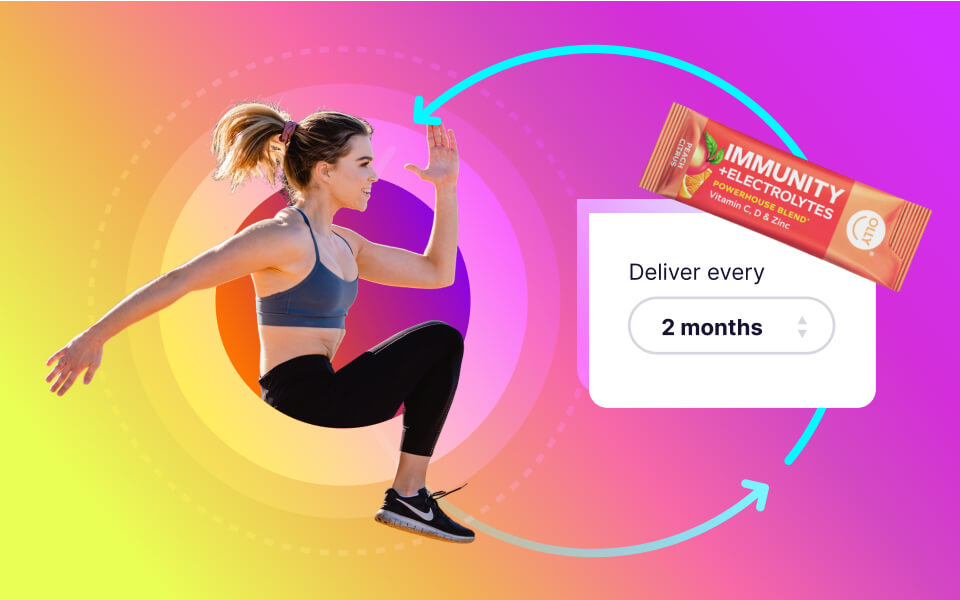
Customer loyalty is the ultimate goal of any business because loyal customers enthusiastically recommend your brand while purchasing repeatedly. But you can’t have loyalty without first committing to a customer retention strategy.
Retention starts with eliminating obstacles that contribute to customer churn. That means creating experiences that set your brand apart from the competition. Consistently good experiences eventually culminate in brand loyalty and a healthier bottom line. Consistently bad experiences? You can imagine the consequences.
A 2022 PwC survey found that 55% of respondents would stop buying from a company they liked after multiple bad experiences. Eight percent would churn after just one bad experience — a bearable churn rate, you might think. But what if in that 8% was someone who could’ve become your best customer with the right retention marketing strategy?
If you follow the eCommerce customer retention examples discussed below, you’ll improve customer relationships and ultimately turn repeat buyers into loyal advocates.
Benefits of focusing on eCommerce customer retention
There are two reasons why brands need to double down on eCommerce retention — rising customer acquisition costs (CAC) and ROI.
CAC is out of control. Andy Hayes, founder of eCommerce tea brand Plum Deluxe, told the Wall Street Journal in 2021 that the cost to acquire a customer using social media ads had jumped from $27 per customer to $270 thanks to Apple’s iOS privacy policies.
Higher CAC means that companies are losing more money on orders from first-time buyers. According to Charles Nicholls, who runs eCommerce consulting firm SimplicityDX, brands lost $29 lost per order in 2022, up from $9 per order in 2013.
As a result of today’s competitive market, it’s more important than ever to offset CAC by ensuring that the customers you do acquire stick with your brand.
The other reason to prioritize eCommerce retention is that it dramatically boosts ROI per current customer, which in turn improves profits. Nicholls writes that orders from returning customers are now more profitable — $38 in profit per order in 2022 vs. $28 in 2013.
With customer retention so important, it’s vital to measure it properly to ensure your efforts are paying off.
How to measure customer retention
Customer retention rate (CRR) is the first KPI to calculate. Specifically, CRR is the percentage of customers a brand has retained over a given period of time.
To calculate CRR, you first need to identify a period of time. The period of time you use will depend on your business, but it’s common to evaluate this customer service metric annually, quarterly, and monthly.
Once you’ve identified the correct period, you need to collect three pieces of information:
- Number of existing customers at the start of the period (S)
- Total number of customers at the end of the period (E)
- Number of new customers added in the period (N)
After you collect your data, drop the numbers into this formula:
((E–N)/S) × 100 = CRR
For example, let’s assume you had 125 customers at the start of a one-month period (S). During this period, you lost five customers but gained 30 (N) new customers. This means at the end of the period you had a total of 150 customers (E).
Your CRR formula would look like this:
((150–30)/125) × 100 = 96%
This may be obvious, but the higher your retention rate, the better. Put another way, a high customer retention rate means you have more repeat purchases and, ultimately, higher customer lifetime values.
Examples of customer retention for eCommerce brands
eCommerce customer retention means continuing to meet customer expectations long after the first eCommerce sale. The key is to know your customers and tailor your retention tactics to their preferences.
CBDistillery: Lean into content-led commerce
At a surface level, content helps customers get the most out of their purchases. On a deeper level, it can increase customer retention by creating an emotional bond with your customer base.
In a 2020 study, the Qualtrics XM Institute found that emotion had the greatest impact on the following retention-related customer behaviors: “purchasing more, recommending, forgiving, and trusting.”
There are many ways to use content to connect with and retain customers. One is fusing commerce with entertainment. Fashion brand Tommy Hilfiger hosts live online fashion shows where viewers can immediately purchase items featured in the program.
According to McKinsey, video content like Hilfiger’s “live commerce” can “strengthen positioning among existing customers and attract new ones, especially young people keen on innovative shopping formats and experiences.”
CBDistillery uses ebook and podcast content marketing to create bonds with customers who consider CBD an essential part of healthier living.
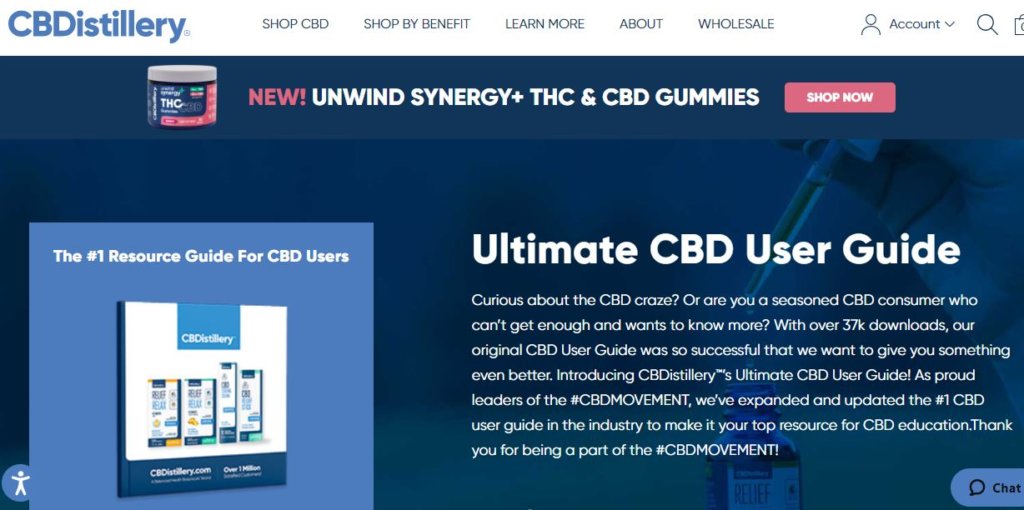
The ultimate guide contains links to recommended products, so customers don’t have to leave the guide and search for the products online. CBDistillery takes them to eCommerce product pages instantly, which contributes to a seamless customer experience. It’s a great example of customer retention.
On-demand webinar: CBDistillery’s playbook for subscriptions
Yankee Candle: Implement a subscription experience
Subscriptions are one of the best customer retention programs examples because retention is built into its business model. Subscription eCommerce businesses ship customers a consumable product each month in exchange for a recurring fee.
The two main consumer benefits of implementing a subscription experience are convenience and cost savings.
Subscriptions are convenient because they give shoppers back time by ensuring their favorite products are delivered to their door.
Subscriptions are also cheaper than one-and-done purchases over the long term. It’s common for brands to offer up to 20% off products purchased through subscriptions.
Yankee Candle implemented a subscription experience partly to win back and retain customers who were used to buying their products from other merchants.
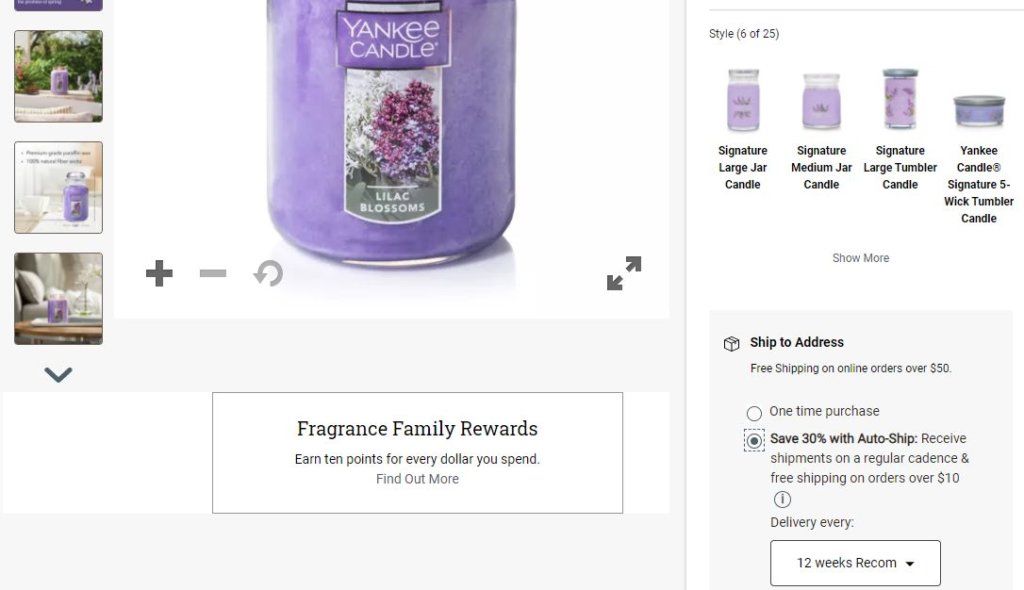
Yankee Candle not only shows customers what they stand to save by becoming a subscriber but also lets them set the cadence of their deliveries. The result? A subscriber retention rate of 90%. This is an excellent example of customer retention from Yankee Candle.
Case study: How Yankee Candle boosted their recurring revenue by 343%
Vitamin Shoppe: Leverage a customer loyalty program
A customer loyalty program rewards shoppers for retention. The more they purchase and interact with your company, the more they’re rewarded.
It might seem counterintuitive, but paid loyalty programs drive better customer retention than free ones. McKinsey found that paid loyalty program members are 60% more likely to increase spending after subscribing, which is twice as high as the likelihood for free programs. Paid loyalty programs also drive “higher purchase frequency, basket size, and brand affinity” than free programs.
Another example of customer retention comes from The Vitamin Shoppe. They use a tiered, point-based loyalty program that merges free and paid memberships.
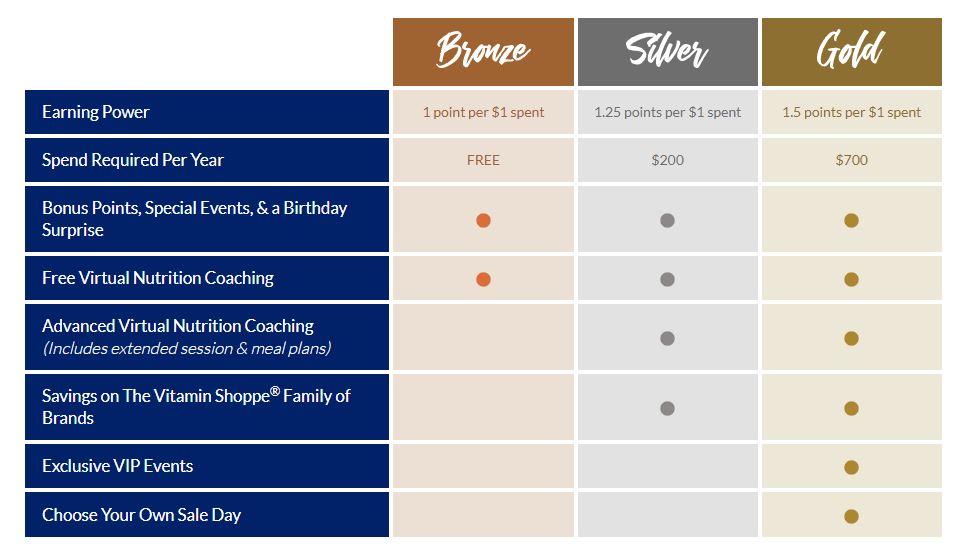
Their “paid” tiers — Silver and Gold — require minimum spends to take advantage of the better perks. While Vitamin Shoppe rewards points for purchases only, you could award points for other actions, such as sending referrals or becoming a social media follower.
One key to a successful loyalty program is to make it easy for customers to understand and take advantage of rewards. If customers are always unsure about how many points they’ve earned or how they can redeem them, they may lose interest in the program.
Loyalty program providers such as Yotpo integrate with the top eCommerce platforms. It generates a dashboard where customers can easily see their point totals and any products they can purchase with their points.
Flywheel: Collect customer feedback
The only way to know if your customer retention program is paying off is to ask customers for feedback. Use their responses to diagnose pain points in the user experience and proactively remove them.
If you’re not used to asking customers for feedback, start with the customer satisfaction (CSAT) survey. Low rates of satisfaction don’t bode well for strong customer retention.
This survey asks a variation of this question — “How would you rate your overall satisfaction with our [goods/service/experience]?” — which respondents answer with a number from one to five. One means very unsatisfied, while five means very satisfied.
Include an open-ended question with your CSAT survey for even deeper insights. If the CSAT survey focused on shipment correspondence, this question might be, “How would you like to receive shipping updates (email or SMS)?” Shopify, for example, has a wealth of apps that send CSAT surveys after specific eCommerce experiences. Implementing these can help with Shopify customer retention for your store.
Send multi-question surveys less frequently and configure them for high response rates. Marketing agency Kantar found that a survey taking more than 25 minutes to complete “loses more than three times as many respondents as one that is under five minutes.”
Consider including a survey-completion incentive. According to PeoplePulse, a 12–25 question customer satisfaction survey with an incentive saw a response rate of 15–30%. Similar surveys without an incentive only saw a response rate of less than 10%.
Flywheel uses the incentive of a t-shirt sweepstakes. They’re also clear about how long the survey will take to complete.
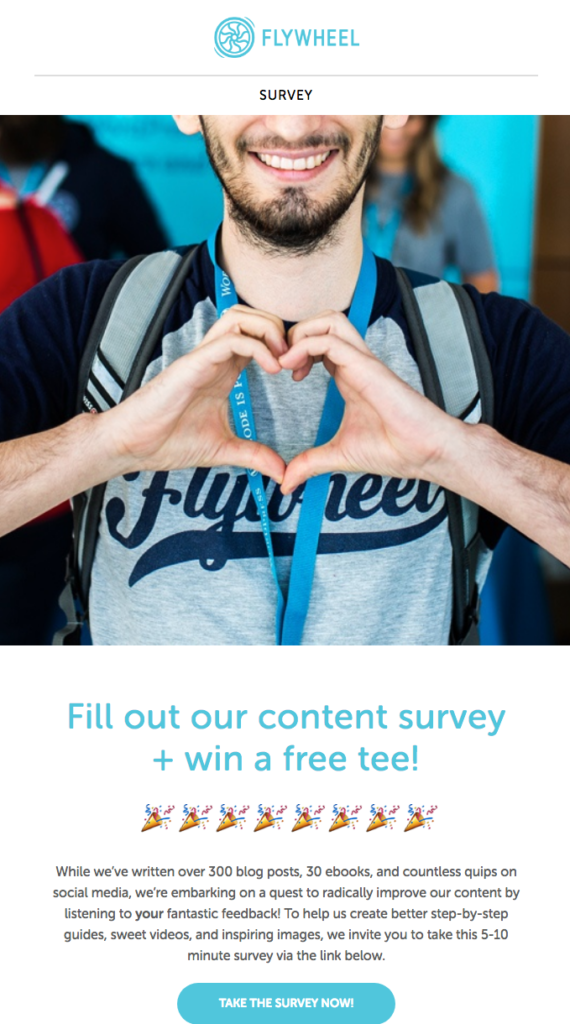
Flywheel may be a B2B company, but you can adapt their survey best practices to your eCommerce business.
KIND Snacks: Offer creative incentives to encourage retention
Incentives are table stakes for customer acquisition and retention. Since all eCommerce companies use them, standing out from the competition means keeping your incentives fresh and desirable. Sending a 10% discount on a customer’s birthday is no longer enough.
Other incentives to consider include extra loyalty program rewards when customers hit membership milestones, branded swag, exclusive content, and early access to new products.
KIND Snacks uses creative incentives to move customers from the thought of buying once to becoming a subscriber.
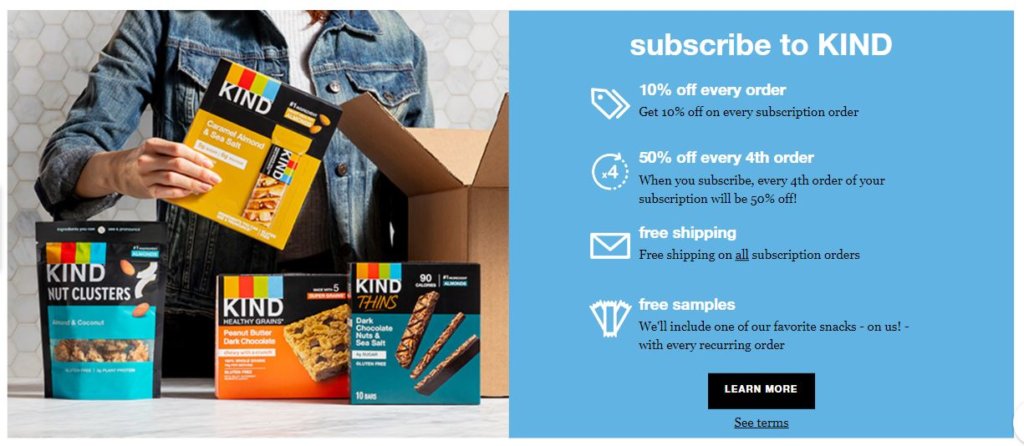
For one-off buyers, KIND offers free shipping on orders greater than $40. But subscribers get 50% off every fourth order and free samples in each shipment, among other incentives. This creative combination allowed KIND Snacks to grow their subscriber base by 50%.
Case study: How KIND Snacks grew their subscriber AOV by 24%
Chemical Guys: Increase customer engagement with social media
Positive social media experiences with a brand build customer retention. A 2021 Sprout Social survey found that 77% of respondents will choose a brand over the competition thanks to the positive experience, and 72% will spend more with that brand.
There are several ways to create those positive social media experiences:
- Make it easy for customers to report problems using Twitter.
- Promote social issues that reflect your values.
- Share user-generated content (UGC) about your products or services.
- Reward brand advocates with gifts and shoutouts.
Chemical Guys uses Instagram giveaways to gauge enthusiasm for their brand and turn winners into brand ambassadors.
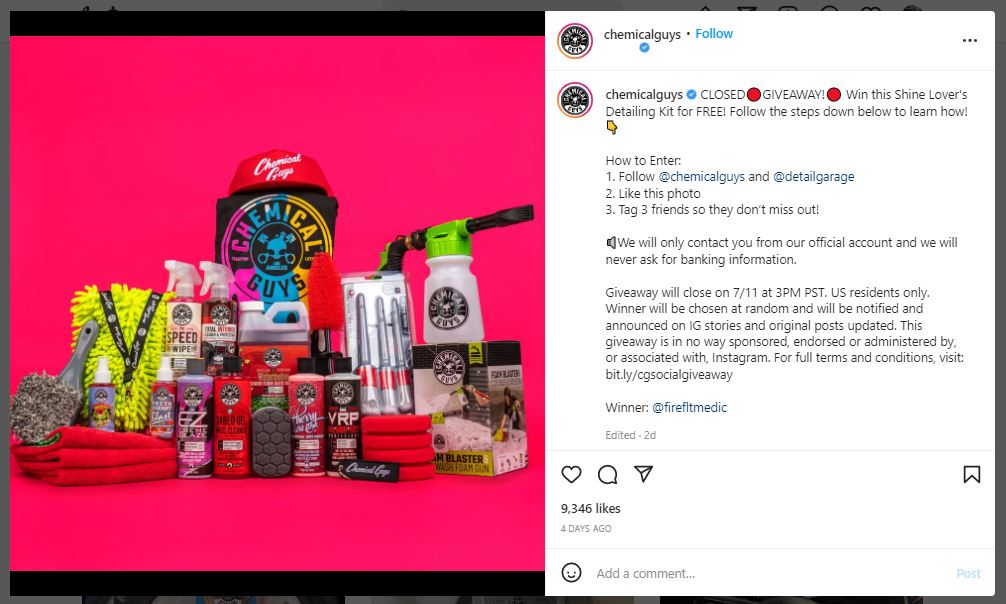
Better yet, brands can place non-winning entrants into an Instagram Group and DM them a special offer such as a discount code to encourage future purchases.
Warby Parker uses Twitter to engage with customers socially, allowing the brand to show off their human side and grow retention through building rapport with individuals.
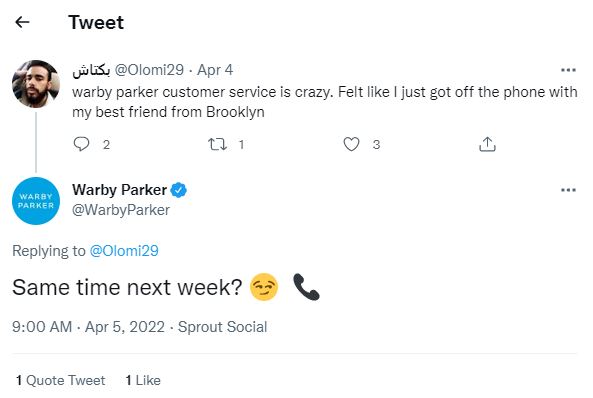
Think of social media as an indirect sales channel, not one where you aggressively promote products. If you create engagement opportunities similar to those of Warby Parker and Chemical Guys, you’ll grow customer retention gradually but effectively.
On-demand webinar: How to drive more recurring revenue with a polished subscription experience
CROSSNET: Optimize customer support
The connection between customer retention and customer support can be summed up in this finding from a 2022 Zendesk survey: a whopping 81% of respondents say a positive customer support experience increases the likelihood they’ll become repeat customers.
A positive support experience starts with an empathetic and knowledgeable support team and a support tool that makes it easy for customers to resolve issues.
CROSSNET uses a tool called Gorgias that integrates with its eCommerce platform. This integration gives customers the convenience of canceling, tracking, and returning an order from a chatbot.
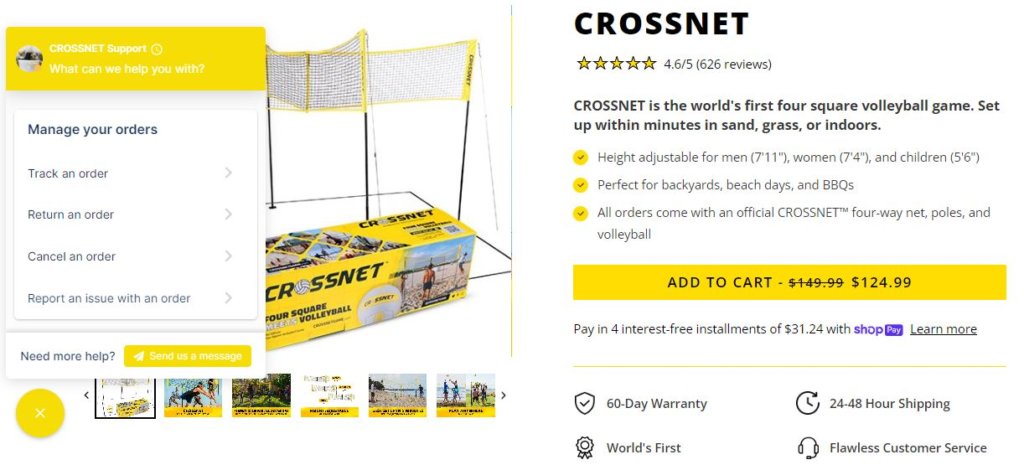
CROSSNET also has a live agent available who answers product questions within minutes. This feature is especially important for retention since 76% of customers expect an immediate response when contacting a company, according to Zendesk.
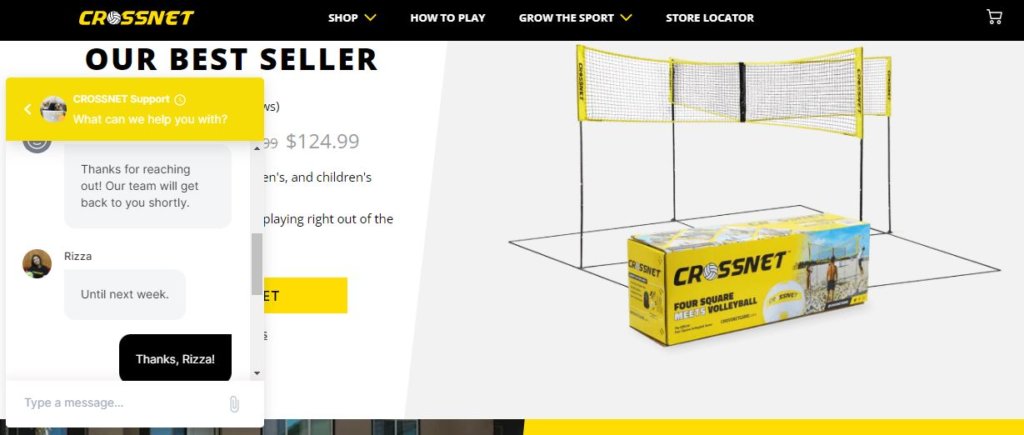
To streamline agent workflows, Gorgias displays a customer’s support and order history in a single dashboard. Now agents don’t have to switch between multiple platforms to find what they need, making support interactions more efficient and pleasant to the customer.
eCommerce customer retention is about playing the long game
Customer retention is a continuous process. It’s not a problem you ultimately “solve,” but a process of identifying and responding to evolving customer needs over time.
The customer retention examples mentioned above have mastered different elements of this process. It’s up to you to decide which are most valuable to your eCommerce business.
What to know more about subscriptions?
Check out our nine-part guide. It contains everything you need to know to launch and optimize your subscription experience.